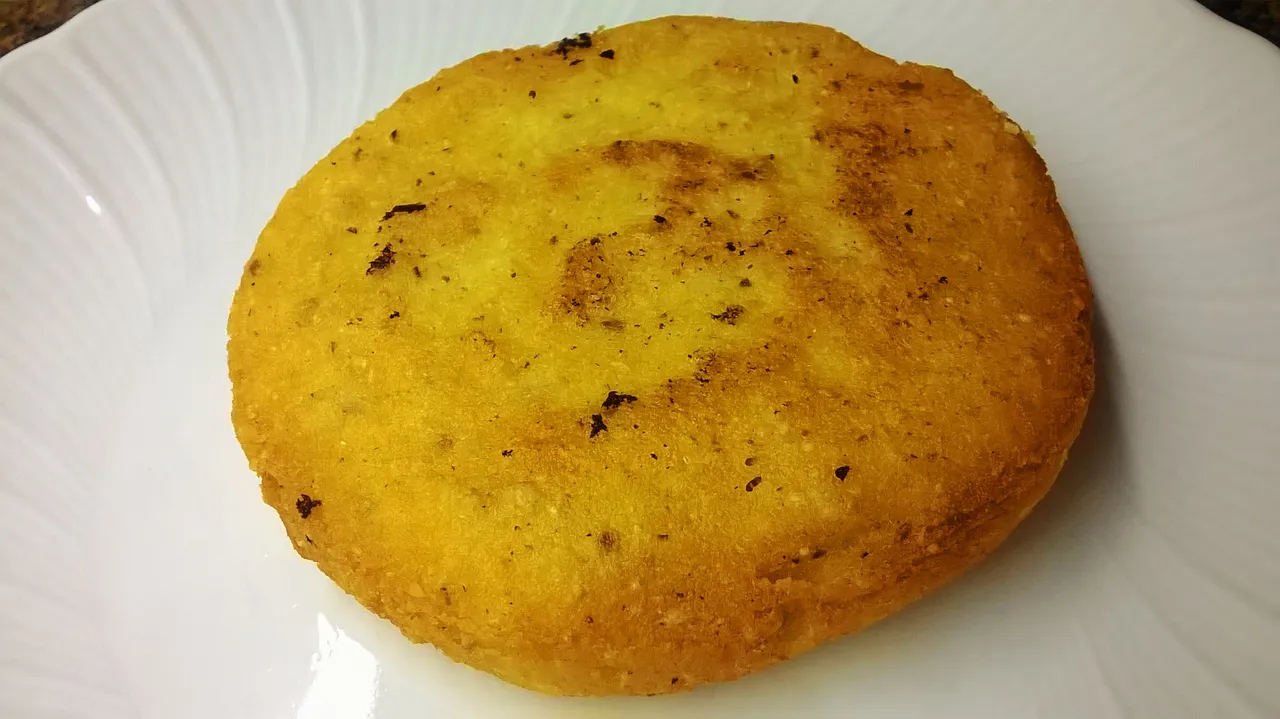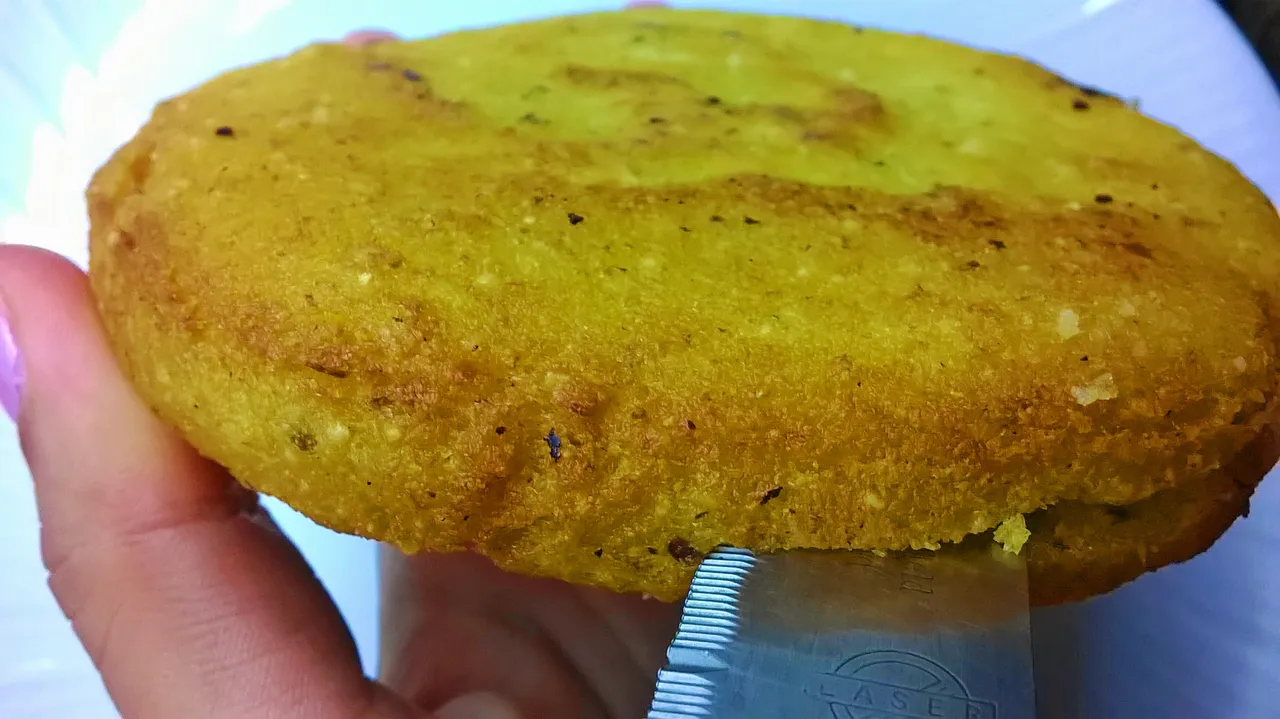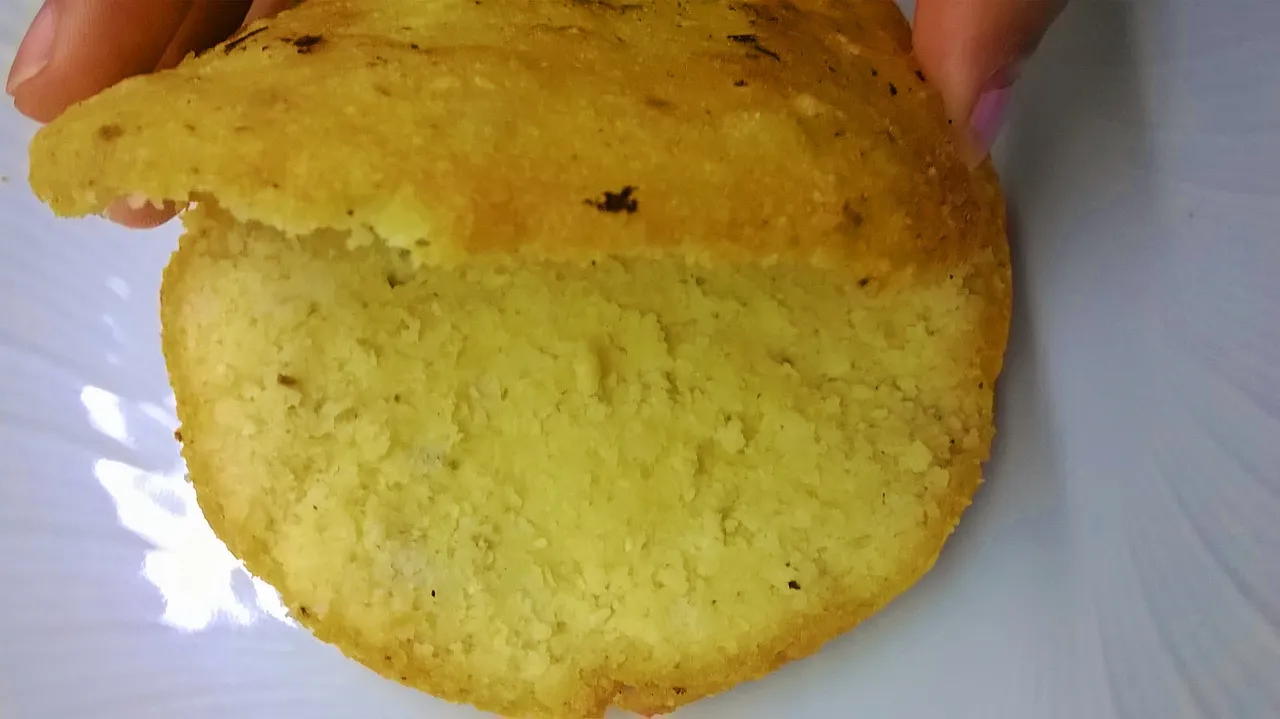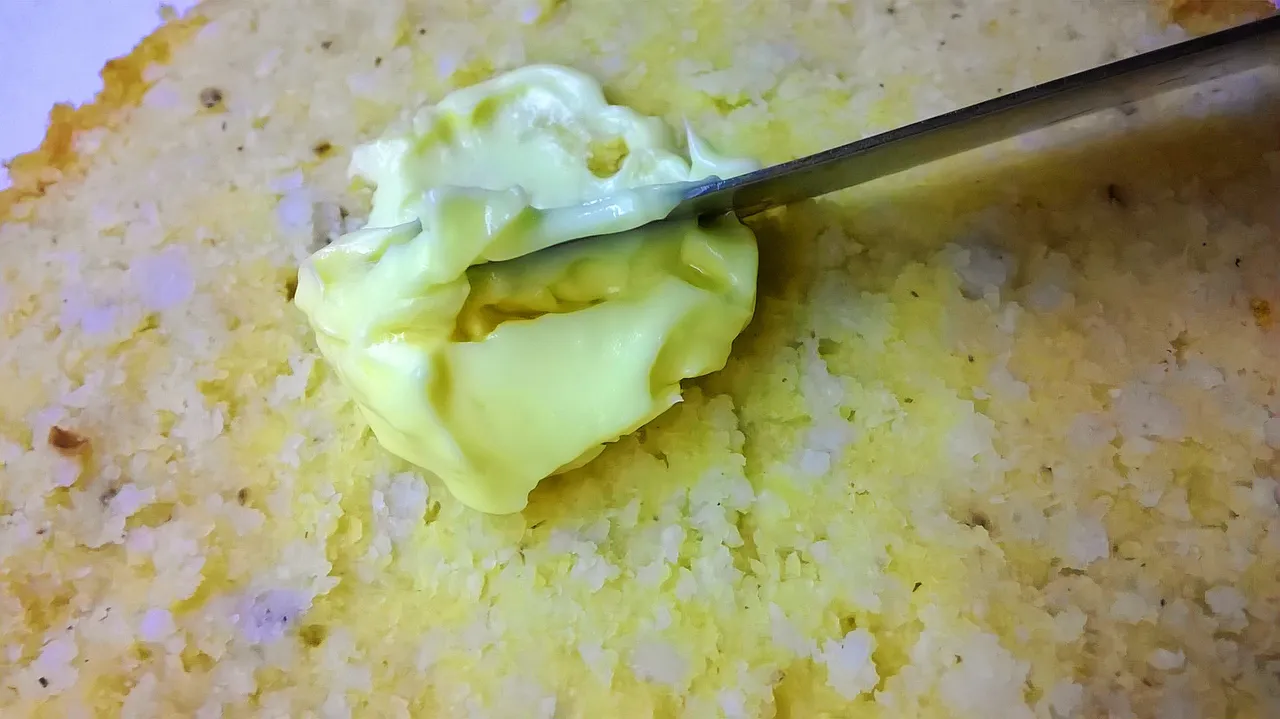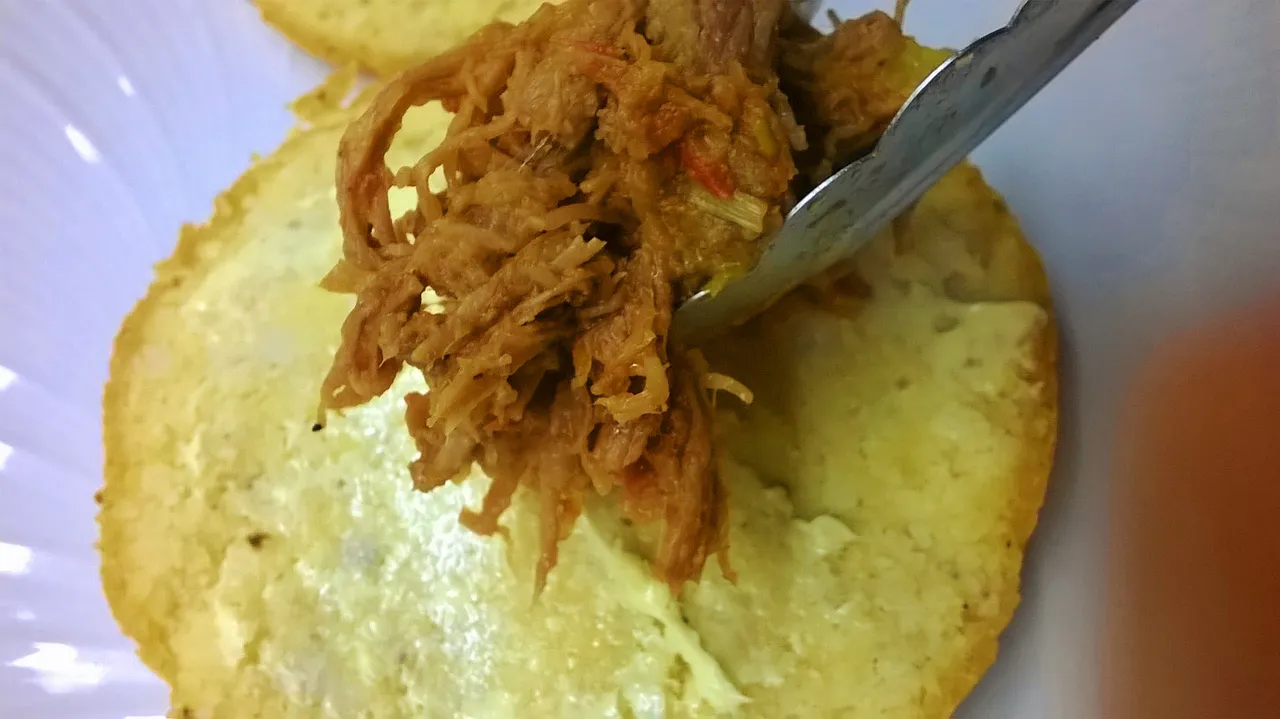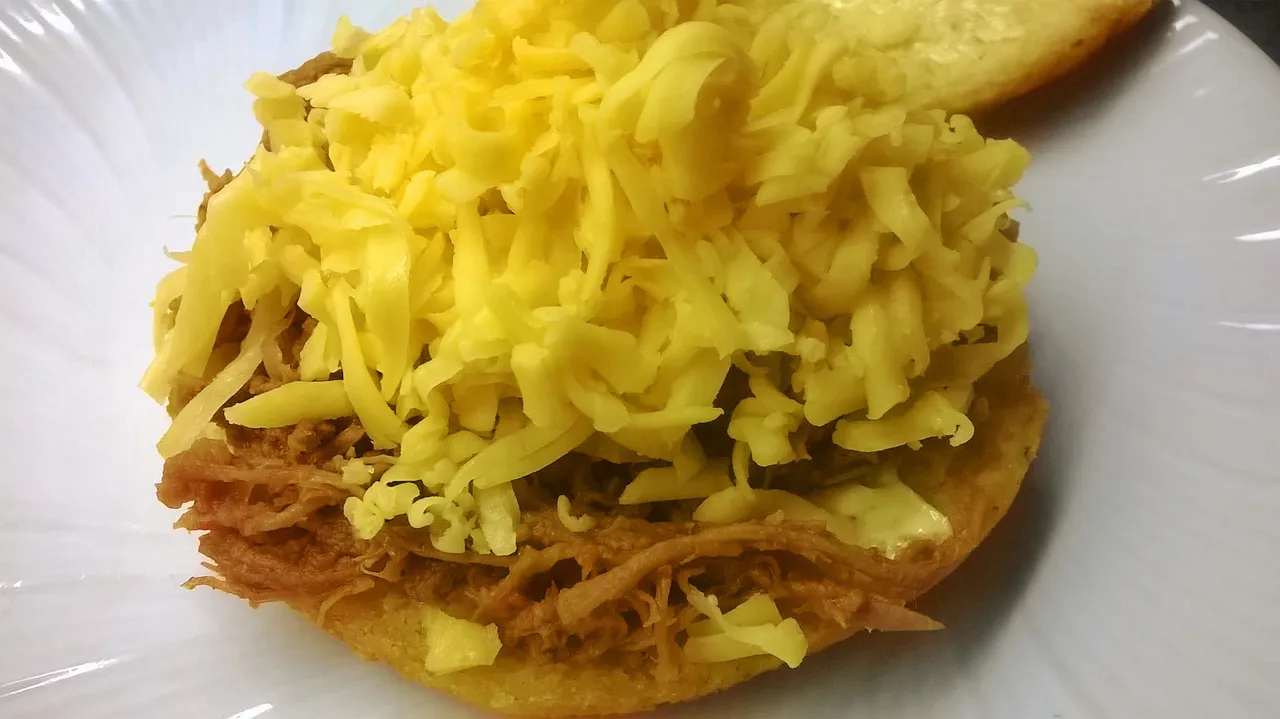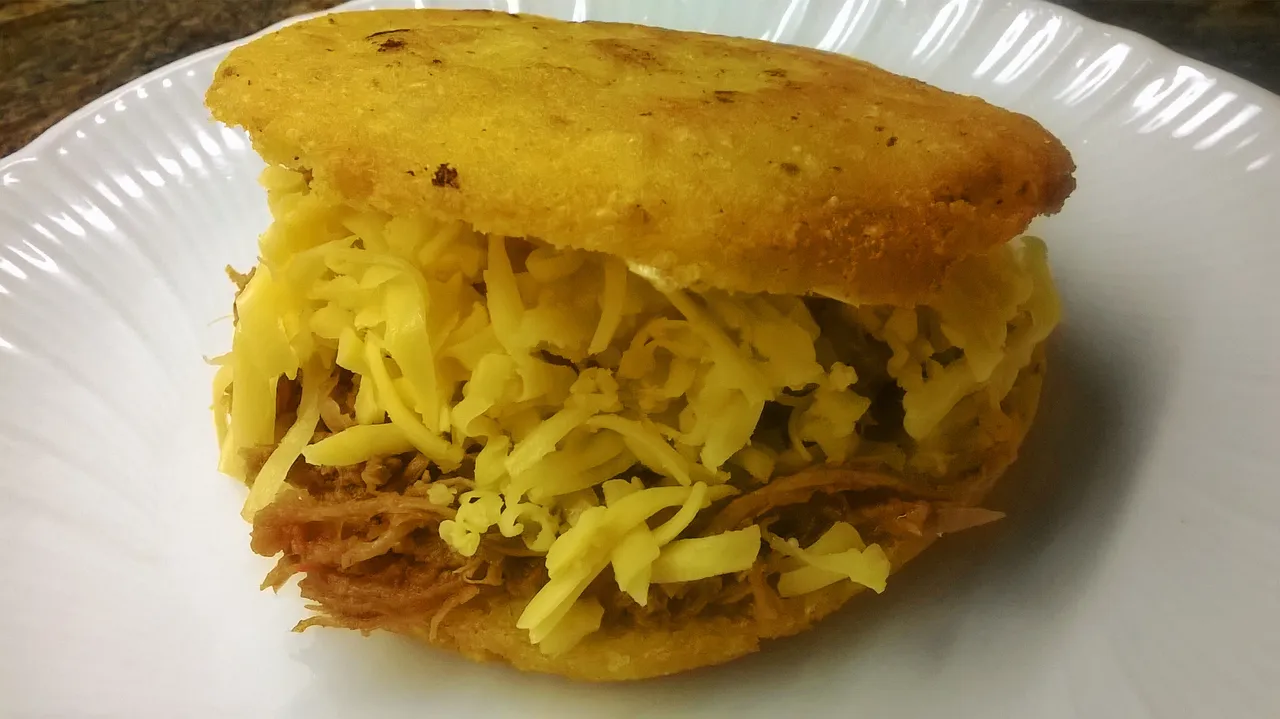Hola mis bellezas de Hive! ¿Tienen hambre? Hoy les traigo una rápida preparación de la famosa arepa venezolana "La Pelua" Por su aspecto peludo que da la estética de la carne mechada.
Hello my Hive beauties! They are hungry? Today I bring you a quick preparation of the famous Venezuelan arepa "La Pelua" Because of its hairy appearance that gives the aesthetics of shredded meat.
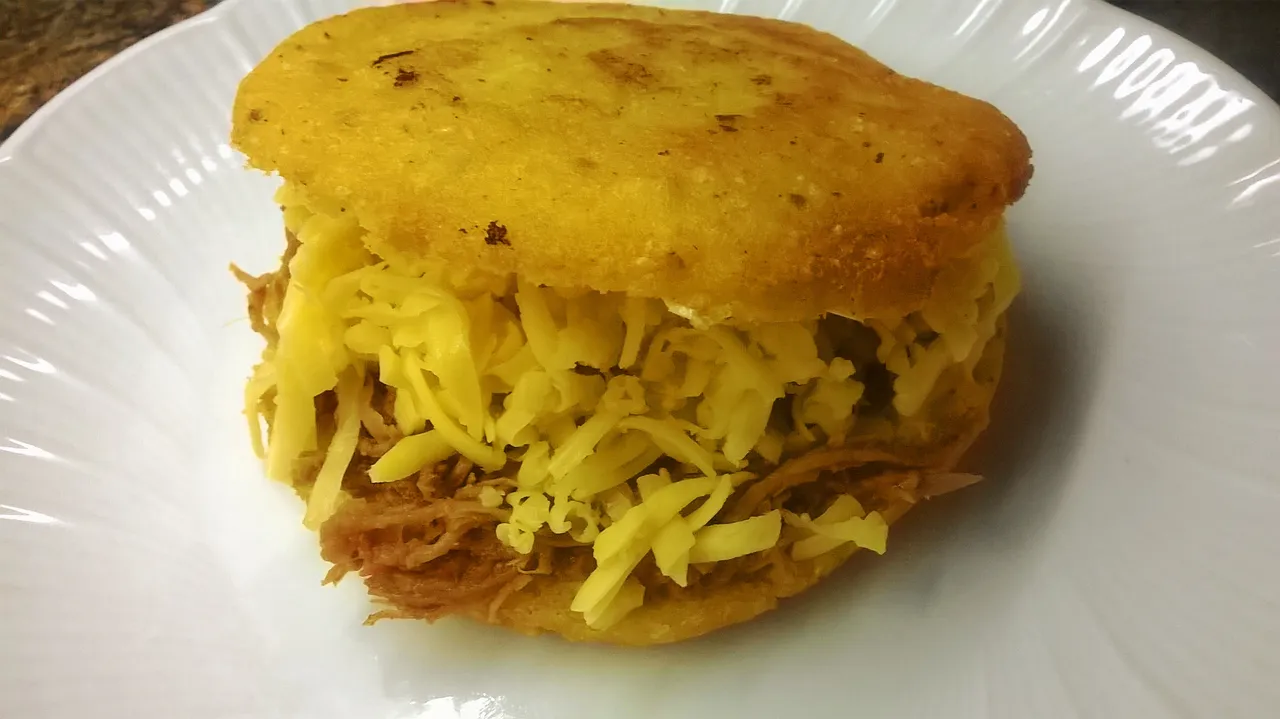
Para preparar esa deliciosa arepa necesitamos previamente hecha una carne de ternera ya mechada y cocinada. Luego buscamos queso amarillo y rallamos la cantidad que querramos utilizar.
To prepare that delicious arepa we need previously made a beef meat already shredded and cooked. Then we look for yellow cheese and grate the amount that we want to use.
Tambien tenemos que tener una masa de maíz precocido. Yo utilicé una parte de harina de maiz amarillo junto a otra parte de maíz pilado.
We also have to have a precooked corn dough. I used a part of yellow cornmeal together with another part of ground corn.
Cuando amasamos, hacemos unos bollos semidelgados y redondos (aplastados), la masa debe estar en un punto medio que se pueda moldear. Una vez hecho eso colocamos en una freidora o un sartén sumergido en aceite.
When we knead, we make semi-thin and round buns (flattened), the dough must be at a midpoint that can be molded. Once that is done we place in a fryer or a frying pan dipped in oil.
El bollo va a quedar frito por ambos lados, lo sacamos de la freidora y técnicamente ya tenemos una arepa frita hecha.
The bun will be fried on both sides, we take it out of the fryer and technically we already have a fried arepa made.
Se corta con un cuchillo la arepa por la mitad, quedará una tapa y una base.
The arepa is cut in half with a knife, there will be a lid and a base.
Normalmente la tapa es la parte más delgada y la base lo más pesado, la mitad gruesa.
Usually the lid is the thinnest part and the base the heaviest, the thick half.
Vamos a rellenar la arepa, primero colocamos una capa de mantequilla sobre ambas tapas en la parte interna.
We are going to fill the arepa, first we place a layer of butter on both covers on the inside.
Seguimos colocando carne mechada ya previamente cocinada.
We continue placing previously cooked meat loaf.
A mi me gusta que la carne tenga jugo pero la escurro muy bien del sartén antes de poner sobre la arepa, así no se excede el líquido.
I like that the meat has juice but I drain it very well from the pan before putting it on the arepa, so the liquid is not exceeded.
Luego por encima colocamos queso amarillo rallado,
Then on top we place grated yellow cheese,
Tapamos y ya tenemos una jugosa, deliciosa y espectacular arepa rellena con mantequilla, queso amarillo y carne mechada.
Cover and we have a juicy, delicious and spectacular arepa stuffed with butter, yellow cheese and shredded meat.
Una Pelua ¡Lista para degustar!
A Pelua ready to taste!
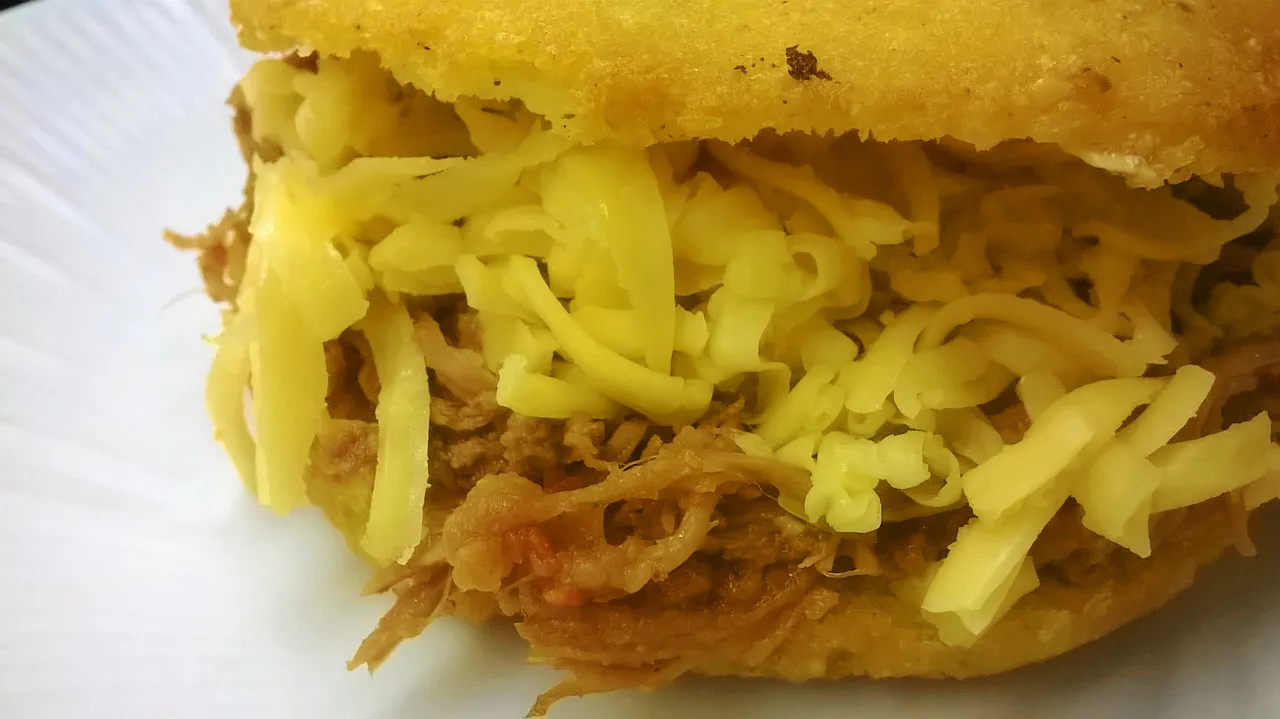
Muchas gracias por leerme mis amores, espero puedan preparar una rica arepa en sus hogares. Nos vemos pronto en un próximo post.
Thank you very much for reading me my loves, I hope you can prepare a delicious arepa in your homes. See you soon in a future post.

![WP_20230630_19_28_13_Pro20210701221713[1].jpg](https://images.ecency.com/p/k75bsZMwYNu41orizPAUzN3tvmesYWkkxTpfLwFKDaD7Fx4QAUjZj5nGToz1XGoLVB9LMq59SdydEp4pEoeqcWVwZRYJSaMX3dQpzWFvMCXQ9DKzfFUeaMcazKvTSuS6qhpunBLA64rkszaRmcwcBHcVdn8gRoE6a.png?format=match&mode=fit)
![WP_20230630_19_29_10_Pro20210701221749[1].jpg](https://images.ecency.com/p/k75bsZMwYNu41orizPAUzN3tvmesYWkkxTpfLwFbyao7xpZK83TUMVo65f2bCF7pzs9341wiQqfZuWeFkRdzFx5FGkMk8Kf4qvckCniuCjpLYditLGVDgLFtCTcHTXCd6LP5RD8Z9abgohEc5yWDFNE3ACJgPBJkv.png?format=match&mode=fit)
![WP_20230630_19_48_59_Pro20210701221855[1].jpg](https://images.ecency.com/p/k75bsZMwYNu41orizPAUzN3tvmesYWkkxTpfLwDj532NCaTKoF8DdzT2FKPp1NLqQs9yX4J3zPBPTHWhnGbMxmTE8E4DTUvW6DPr8YJdxZasgAeK53wFjUUFMvsEGHVpScVSZMTD7anNdNCrA1yaaoxVVcw8XqTEE.png?format=match&mode=fit)
